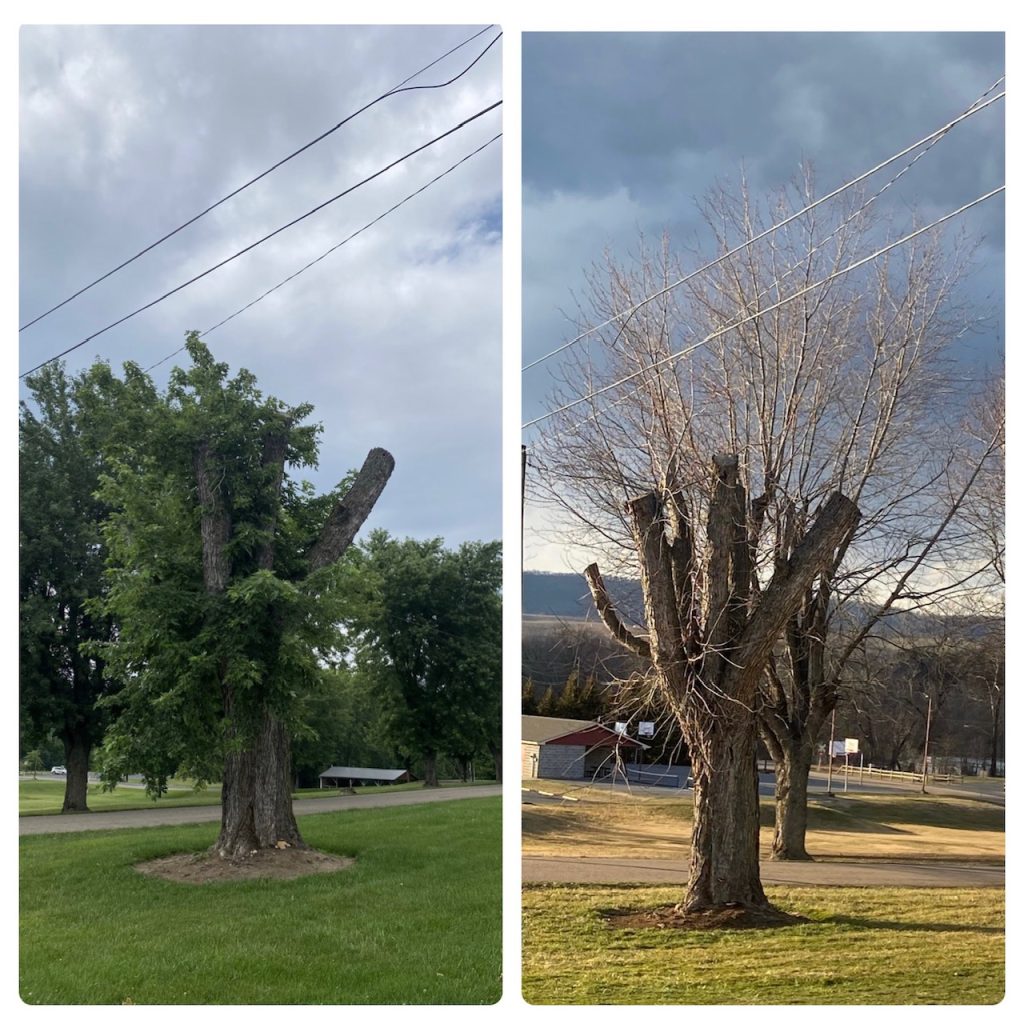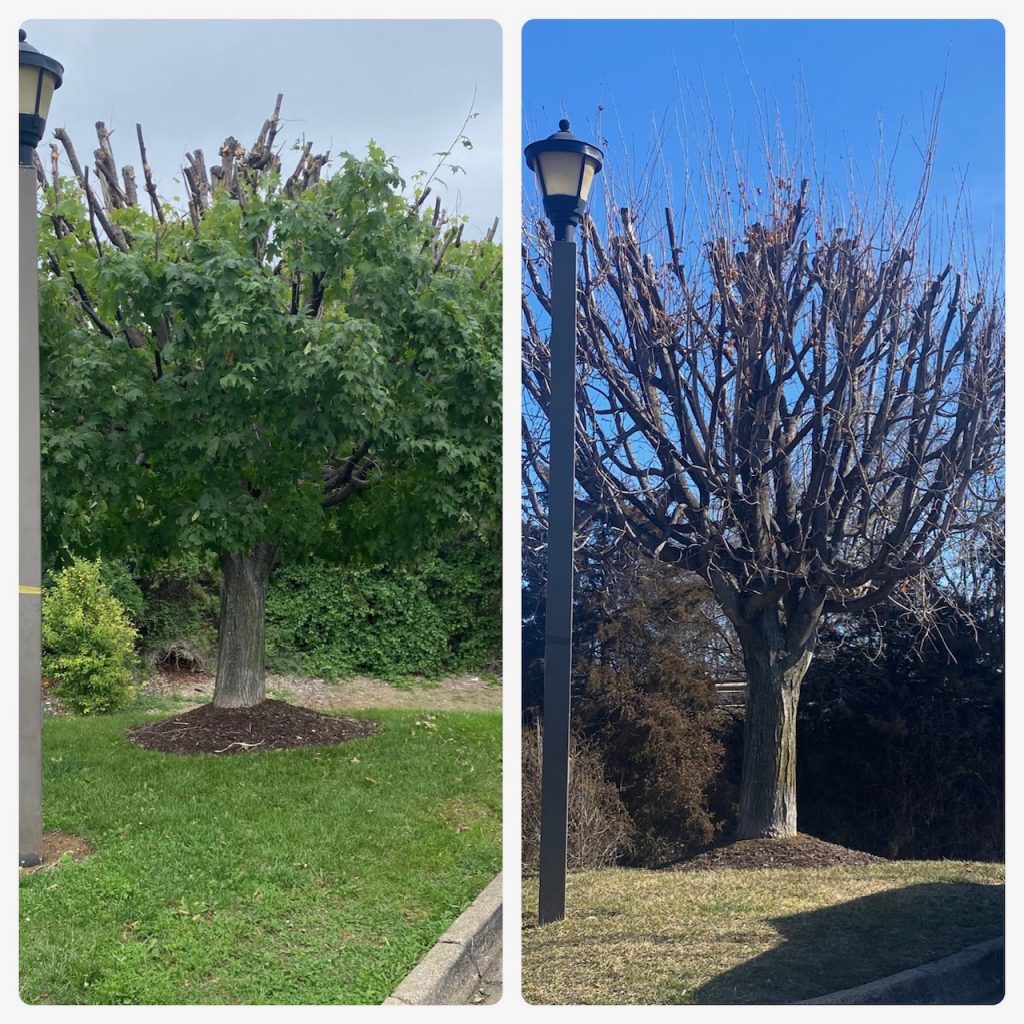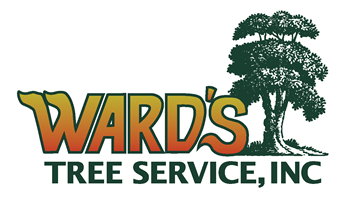What is Tree Topping?
Tree topping is the reduction of a tree’s size using heading cuts that shorten limbs or branches back to a stub. This misguided practice is also called heading, tipping, hat racking, and stubbing. The goal of tree toping is to reduce the tree’s size to make it safer. Arborists and tree care professionals never offer or perform topping; instead they will assist you in pruning your tree in a healthy manner. ANSI A300 standard defines practices for tree care and have been adopted by the Tree Care Industry Association – topping is specifically mentioned as an unacceptable practice.
What Happens to a Tree when Topped?
Topping Stresses Trees
Tree topping removes 50% to 100% of the leaf-bearing branches of a tree. Leaves are the source of food for a tree, removing them can temporarily starve the tree. Severe pruning forces latent buds in the trunk below the cut to sprout (commonly called “suckers”) in order for the tree to generate more leaves. If the tree does not have the stored energy to do this, it will become weak and may die.
Topping Causes Decay
If branches are not cut properly, the tree cannot close the wound because it is too large or there are too many of them. The exposed wood begins to decay allowing the decay organisms to invade the trunk of the tree.
Topping Causes Hazards
The new shoots formed when the tree is topped are anchored only in the outermost layers of the branch or trunk, instead of growing from the center as normal branches do. These shoots are more prone to breakage because they are inherently weaker than regular branches. Also, any decayed wood in cut branches or the trunk weakens the tree leading to breakage. The result is that after topping the tree becomes more hazardous than before.
Topping Makes Trees Ugly
Trees grow to present their leaves to the sun for nourishment. Topping removes the branches leaving ugly stubs – a topped tree appears disfigured and is actually mutilated. When leaves grow on the new shoots it appears as a dense ball instead of a well formed tree.
Topping Trees is Expensive
If a tree survives after being topped it will require pruning again within a few years; if it dies it will have to be removed. Healthy, attractive trees can add 10% to 20% to the value of your home while disfigured trees can reduce the value of your home, not only because they arer no longer attractive but because they represent a future expense.
Please click an image for a larger image.


